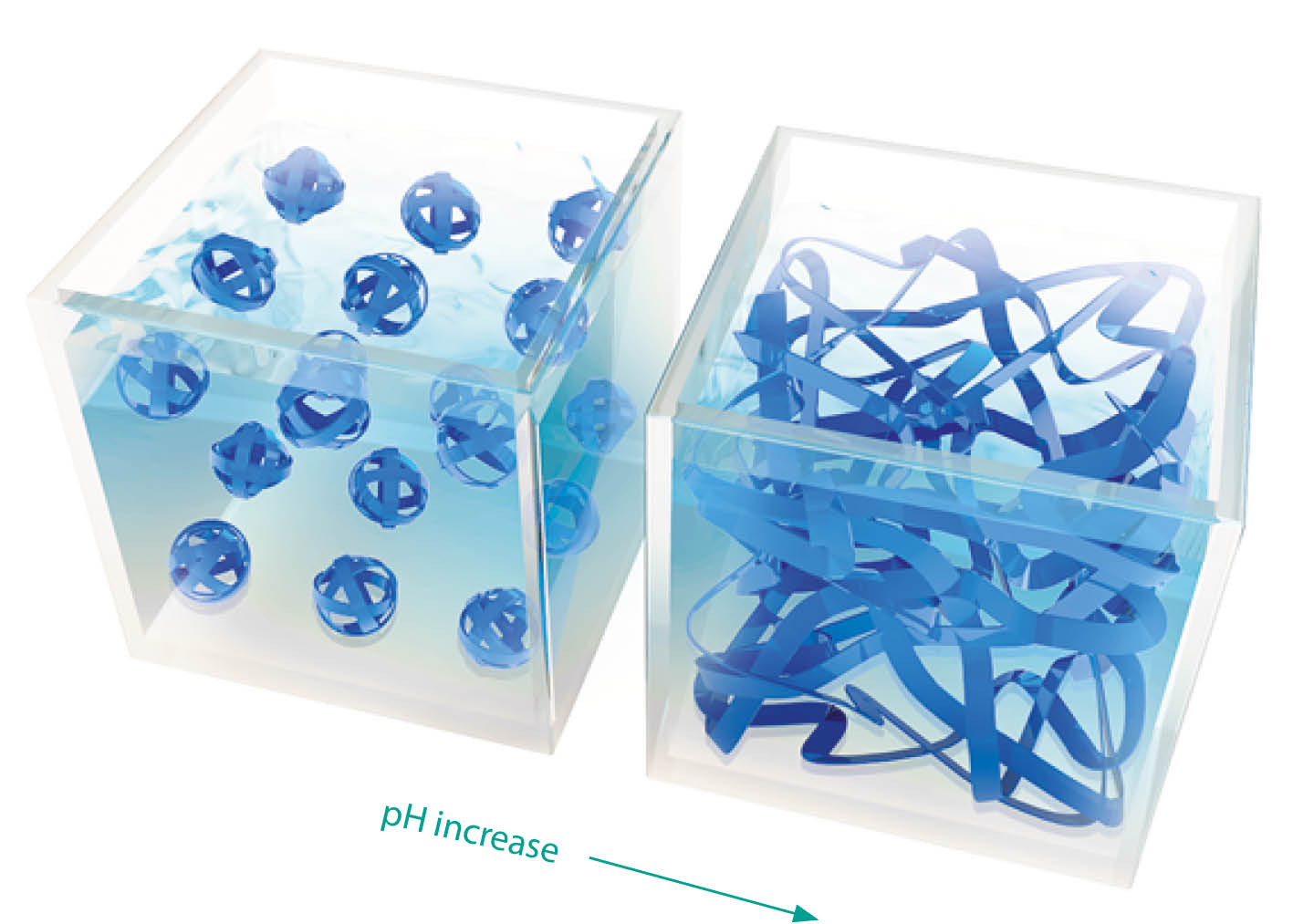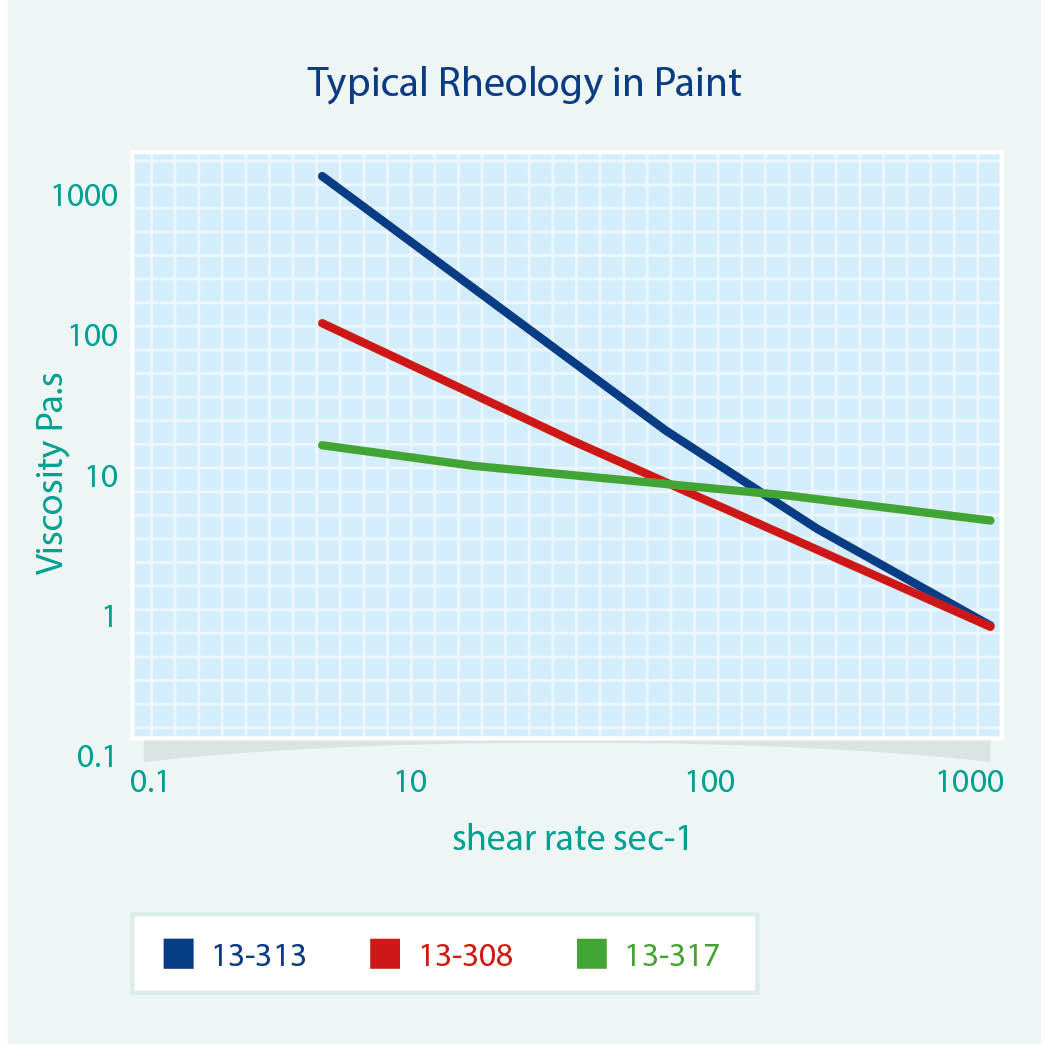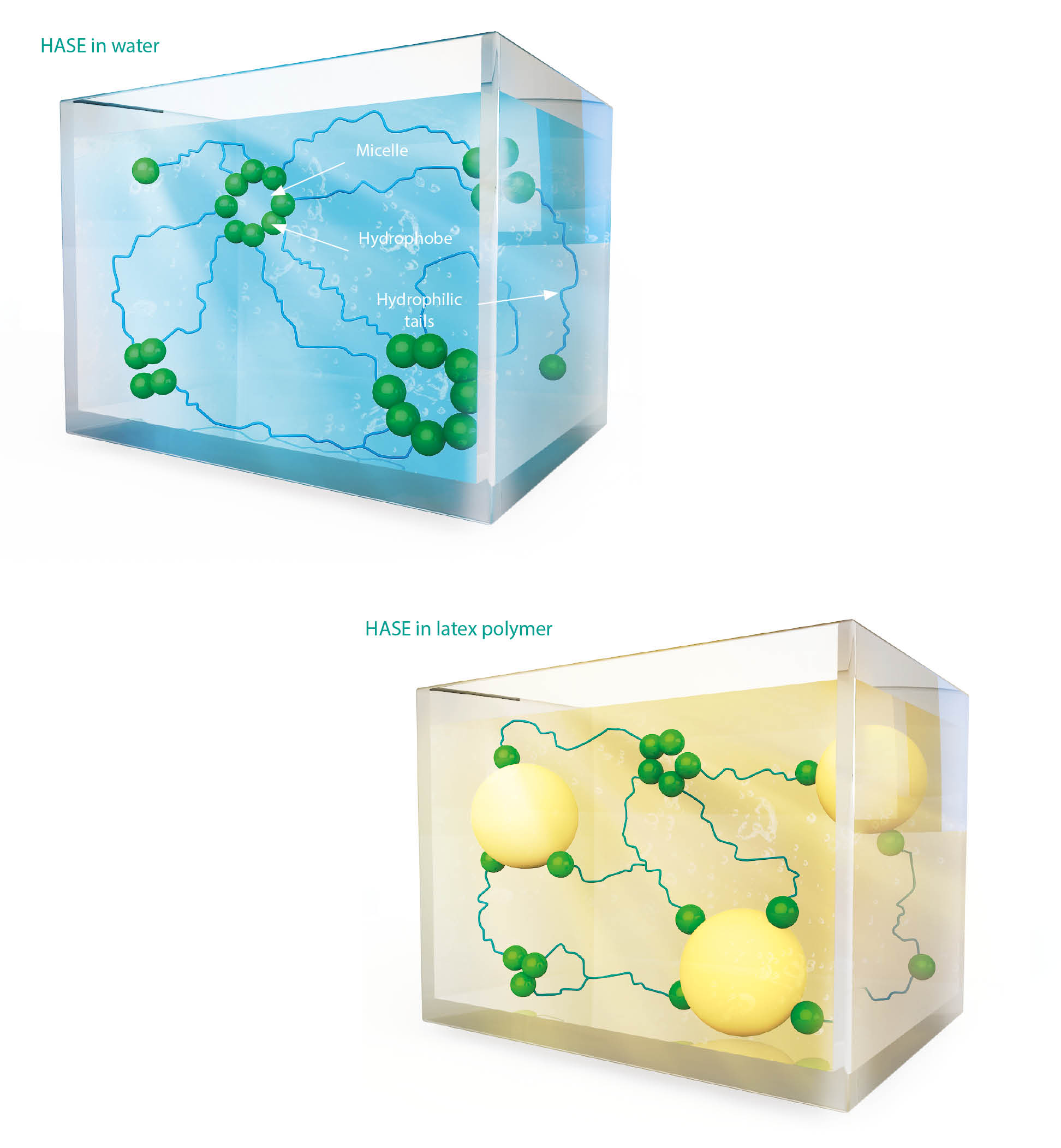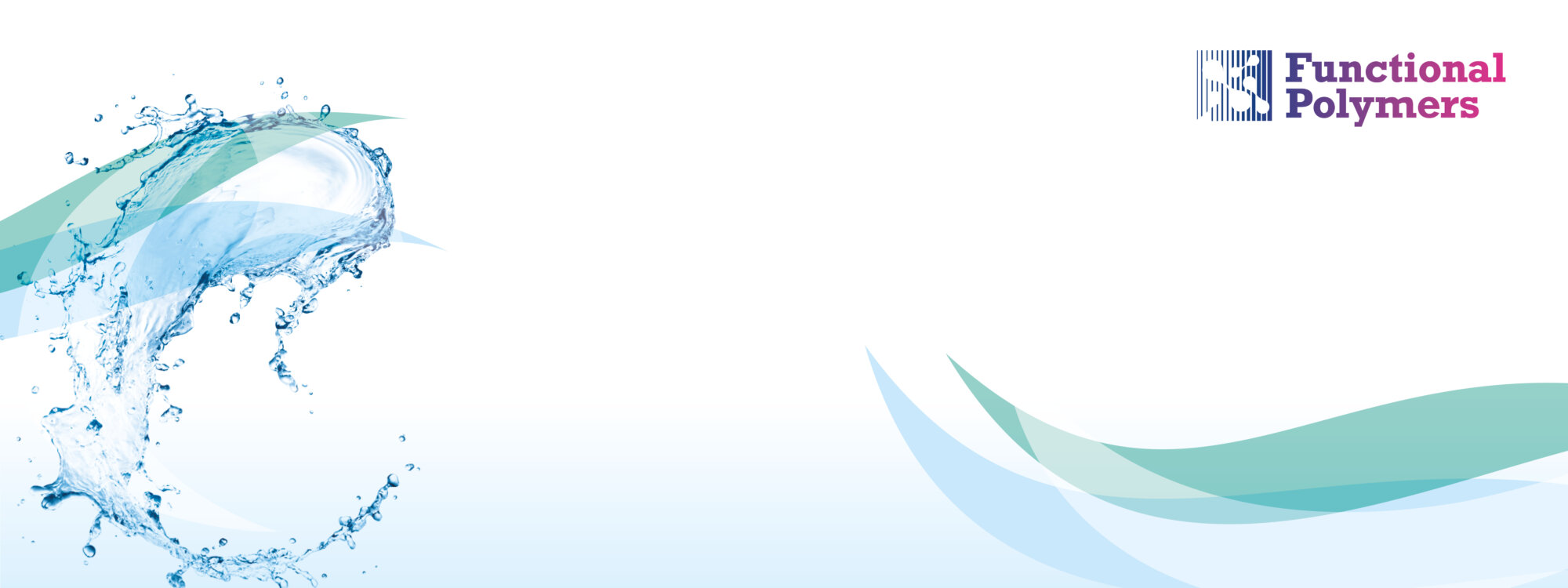Emulsion thickeners
Scott Bader Texicryl – Alkali Swellable Emulsions
These are dispersions of acid functional acrylic polymers in water. They are supplied at low pH and the acid groups on the polymer chains need to be neutralised to allow the polymer to swell and thicken. Under acidic conditions the polymer has a tight, coil-like structure and after the addition of alkali to the system, the pH increases and the acid functional groups on the thickener begin to dissociate. As a result, the thickener becomes more water-soluble and starts to uncoil. As the pH increases further, the polymer takes on a more open long-chain structure, leading to entanglement of thickener molecules with each other. This results in an increase in viscosity and is pictured schematically below:

Formulation Guidelines for Texicryl ASE’s
Thickeners are supplied at low viscosity and typically at 30% solids. They are easily mixed into aqueous based systems and in many cases can be added directly to the system to be thickened followed by pH adjustment where necessary. The final pH of the thickened formulation should generally be in the range 8.0-9.5 to ensure optimum thickening efficiency and maintenance of a stable viscosity. If a volatile alkali such as ammonia is used, care should be taken to avoid loss of the alkali and lowering of the pH as viscosity reduction may occur. In some cases it may be necessary to dilute the thickener (up to 2:1 with water) before addition to certain latex systems to avoid any localised thickening and instability. Another option is to prepare a pre-gel where localised gelation and instability could be a problem. In this case at least two parts water to one part of thickener is recommended followed by neutralisation in order to obtain a handleable gel. Care should also be taken to avoid air entrainment when such a gel is prepared.
Scott Bader Texicryl – Hydrophobically Modified Alkali Swellable Emulsions (HASE)
These are dispersions of acid functional acrylic polymers in water like standard ASE types. They are supplied at low pH and the acid groups on the polymer chains need to be neutralised to allow the polymer to solubilise. HASE systems have, in addition to the acid groups, long chain hydrophobes attached to the polymer backbone.
These hydrophobic groups can associate with each other (forming micelles analogous to surfactants) and with other hydrophobic ingredients in a formulated system. HASE thickeners are often referred to being associative thickeners because of this behaviour.
The multiple associations between the HASE thickener and various formulation ingredients significantly impacts on the rheological properties of a given system. HASE thickeners generally allow a more Newtonian rheology to be achieved compared to standard ASE thickeners. HASE thickeners can be designed to give formulated system rheologies ranging from pseudoplastic to fairly Newtonian depending on the nature of the hydrophobe and the polymer design.
Rheology and Efficiency

The graph to the right indicates the relative rheological behaviour of the Scott Bader range of Texicryl thickeners in a simple paint formulation.
Texicryl 13-313 is a very efficient thickener with a high, low-shear viscosity and has excellent pigment suspension characteristics. It is quite strongly shear thinning, but shows somewhat different flow characteristics compared to a standard ASE thickener.
Texicryl 13-317 shows much less shear thinning behaviour and therefore more Newtonian character leading to higher viscosities in the mid and high shear rate ranges. Improved flow and levelling as well as brush drag and film build is generally achieved when using this thickener.
Thickening Mechanism of HASE Thickeners
The diagrams (below) illustrate how the HASE thickeners look in water and in a system containing latex particles.


